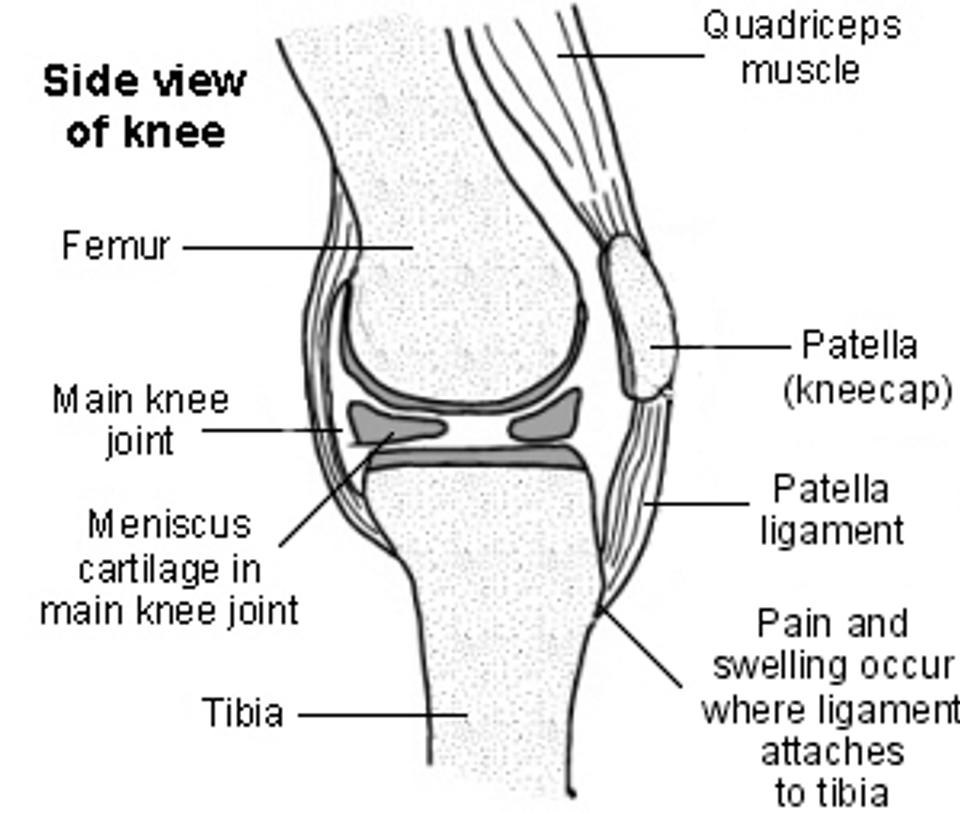What is Osgood Schlatter’s Disease?
Osgood Schlatter’s Disease is a term used to describe pain, in an area of growth just below the knee on the shin bone. It happens in active, young people who are going through a growth spurt
What causes Osgood Schlatter’s Disease?
The large quadriceps muscle on the front of the thigh pulls on the kneecap (patella) and the patellar tendon, to straighten the knee. The patellar tendon attaches to the front of the shin bone (tibial tuberosity). It is thought that repeated stress and strain in the area of this attachment can cause inflammation and pain. As this heals a hard bony bump may develop.

What are the symptoms of Osgood Schlatter’s Disease?
The most common symptoms are:
-
Pain and swelling on the bony part at the top of the shin bone, under the knee
-
A bony lump which is sore when touched or when you kneel
Pain during sport at the front of the knee/tibial tuberosity
Symptoms usually appear around puberty (10-14 years) when you are having a growth spurt. Usually only one knee is painful but both can be affected.
The diagnosis is often clear from the typical symptoms. No x-rays or scans are necessary.
What is the treatment for Osgood Schlatter’s Disease?
A period of rest initially is recommended to allow the symptoms to settle. Managing your symptoms well may allow you to continue with some activities.
Some things that may help are:
-
The use of an ice pack when sore or just after activity (follow instructions on pack)
-
Painkillers (as advised by your doctor)
-
Reducing the amount of activity you do
-
Stretches to loosen up your muscles so that they don’t pull so tightly on your bones (only do these when you are not in pain)
What about sport and other activities?
Sport or physical activity is not likely to cause any permanent damage, but may make your pain worse. If the pain is affecting how you do your sport, you may need to think about how often you train. Reducing strenuous or vigorous sport may be sensible until the pain lessens to a level you can cope with. You should aim to reduce how long, how often, and also how much exercise you do. This is especially important if this exercise includes running or jumping.
You may need to consider a complete break from sport for a while if pain remains severe.
Will it get better?
The pain usually goes away within a few months without any treatment by following the advice given above. Unfortunately, some symptoms can last for 12-24 months.
The good news is you will eventually grow out of it! Once your bones stop growing you won’t have any more symptoms.
Accessible formats
If you require this information in a community language or alternative format e.g. Braille, audio, large print, BSL, Easy Read please contact the Equality and Human Rights Team at: email: fife.EqualityandHumanRights@nhs.scot or phone 01592 729130. For people with a hearing or verbal impairment you can also contact the team via the NHS Fife SMS text service number on 07805800005.
You can also find health related information on many topics in an Easy Read format on nhsinform.scot.




